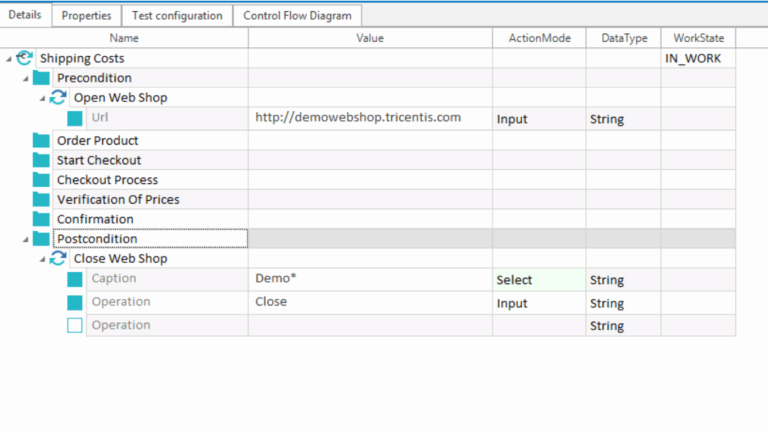Introduction
In today’s fast-paced software development landscape, quality assurance (QA) is crucial to delivering high-performing, bug-free software products. Yet, without proper metrics, managing and improving QA processes can be like navigating a ship without a compass. Metrics provide valuable insights into the effectiveness, efficiency, and overall health of your software testing efforts.
In this blog, we’ll explore the top QA metrics you need to enrich your testing efforts, ensuring that your software meets the highest quality standards. Whether you’re a beginner or an experienced software tester, understanding these metrics is key to optimizing your testing strategy. We will also show how these metrics tie into the Online QA certification course offered by H2K Infosys, which equips learners with industry-relevant skills and techniques.
Why Metrics Matter in QA Testing
Metrics serve as quantifiable measures that help QA teams track the progress, performance, and effectiveness of their testing processes. They provide critical insights into the testing lifecycle, help identify bottlenecks, and offer data-driven evidence to stakeholders on the current quality of a software product.
Metrics are essential for:
- Measuring progress: Tracking whether the project is on schedule.
- Optimizing processes: Identifying inefficiencies or bottlenecks.
- Ensuring quality: Measuring how well the software meets specified quality requirements.
- Facilitating decision-making: Providing the data necessary for making informed decisions.
Now, let’s dive into the core QA testing metrics that can take your testing process to the next level.
Core QA Testing Metrics to Track
Test Coverage
Test Coverage is one of the most fundamental QA metrics, used to measure the extent to which the code is being tested. High test coverage indicates that more of the codebase is being validated through testing, reducing the likelihood of undetected bugs.
How to Measure: Test Coverage is generally calculated as a percentage using the following formula: Test Coverage=Number of lines of code executed by testsTotal number of lines of code×100\text{Test Coverage} = \frac{\text{Number of lines of code executed by tests}}{\text{Total number of lines of code}} \times 100Test Coverage=Total number of lines of codeNumber of lines of code executed by tests×100
Practical Example: If your QA team has written 100 test cases and executed 80 of them successfully, your test coverage would be 80%. Aim for a higher percentage to ensure all critical paths in the application are tested.
Benefits:
- Ensures no part of the code is left untested.
- Helps QA teams identify areas of the code that require more attention.
At H2K Infosys’ QA Testing Online Training Course, students learn how to use advanced tools like Selenium and JUnit to achieve comprehensive test coverage.
Defect Density
Defect Density is a metric that indicates the number of defects found in a software component per size unit, such as per 1,000 lines of code. This metric helps to identify which parts of the code may be problematic and need more focus.
How to Measure: Defect Density=Total number of defectsTotal size of the code (e.g., lines of code)\text{Defect Density} = \frac{\text{Total number of defects}}{\text{Total size of the code (e.g., lines of code)}}Defect Density=Total size of the code (e.g., lines of code)Total number of defects
Practical Example: If 20 defects are found in 10,000 lines of code, the defect density would be 0.002. A lower defect density indicates better software quality.
Benefits:
- Identifies problem areas within the code that require more rigorous testing.
- Helps prioritize the testing of certain modules based on historical defect data.
During H2K Infosys’ software QA training, you’ll learn to measure and manage defect density effectively as part of a comprehensive QA strategy.
Quality of Test Case = Number of bugs detected in AB Test / Total bugs in all tests + after release) X 100
Defect Leakage
Defect Leakage refers to defects that were not found during the testing phase but were later discovered in production. A high defect leakage rate indicates inadequate testing or missing test cases.
How to Measure: Defect Leakage=Number of defects found in productionTotal number of defects×100\text{Defect Leakage} = \frac{\text{Number of defects found in production}}{\text{Total number of defects}} \times 100Defect Leakage=Total number of defectsNumber of defects found in production×100
Practical Example: If 10 defects were found in production, out of a total of 100 defects, the defect leakage rate would be 10%. A lower leakage rate is ideal, as it means most defects were caught before the software was released.
Benefits:
- Highlights areas in your testing process that require more thorough examination.
- Reduces the risk of deploying buggy software, leading to higher customer satisfaction.
Students enrolled in H2K Infosys’ software testing online course will learn how to minimize defect leakage using automated testing tools and comprehensive testing strategies.
Test Execution Rate
The Test Execution Rate tracks how many test cases are being executed within a specific period. This metric is essential for assessing the pace at which your testing team is working and determining if they are on track to meet deadlines.
How to Measure: Test Execution Rate=Number of test cases executedTotal number of test cases×100\text{Test Execution Rate} = \frac{\text{Number of test cases executed}}{\text{Total number of test cases}} \times 100Test Execution Rate=Total number of test casesNumber of test cases executed×100
Practical Example: If your team is expected to execute 100 test cases in a sprint but completes only 80, your execution rate is 80%. Tracking this metric helps ensure that testing schedules are adhered to.
Benefits:
- Helps QA teams track progress and forecast completion timelines.
- Identifies potential delays in the testing process.
At H2K Infosys, our training for software testers teaches effective time management techniques and how to boost execution rates using automation.
Mean Time to Detect (MTTD)
MTTD is the average time it takes for your team to detect a defect after a test cycle begins. Lower MTTD values indicate faster detection, leading to quicker resolutions and minimizing the risk of critical bugs reaching production.
How to Measure: MTTD is calculated by taking the total time taken to detect defects in a test cycle and dividing it by the number of defects found.
Practical Example: If it takes your team an average of 2 days to detect a defect during testing, that is your MTTD. A lower MTTD can be achieved through automation, early test planning, and continuous monitoring.
Benefits:
- Enhances efficiency in the defect detection process.
- Reduces the likelihood of defects persisting undetected.
Students in the H2K Infosys software QA certification program learn how to reduce MTTD through structured testing approaches and the use of monitoring tools like Jenkins and SonarQube.
Mean Time to Repair (MTTR)
MTTR measures the average time it takes to resolve a defect after it has been identified. Lower MTTR values indicate a more efficient resolution process.
How to Measure: MTTR is calculated by dividing the total time spent resolving defects by the number of defects resolved.
Practical Example: If it takes an average of 5 days to fix a critical defect, this is your MTTR. Reducing MTTR leads to quicker releases and lower costs associated with bug fixes.
Benefits:
- Faster defect resolution translates into quicker product releases.
- Reduces development costs by minimizing downtime.
At H2K Infosys, our courses for QA testing focus on teaching learners how to reduce MTTR through collaborative team efforts, proper defect prioritization, and effective use of bug-tracking tools like JIRA.
Test Automation Percentage
The Test Automation Percentage tracks how many of your test cases are automated versus manual. Automation is critical for repetitive tasks, making this metric important for improving testing efficiency.
How to Measure: Test Automation Percentage=Number of automated test casesTotal number of test cases×100\text{Test Automation Percentage} = \frac{\text{Number of automated test cases}}{\text{Total number of test cases}} \times 100Test Automation Percentage=Total number of test casesNumber of automated test cases×100
Practical Example: If you have 500 test cases and 400 of them are automated, your test automation percentage is 80%. Higher percentages of test automation indicate a more streamlined, efficient testing process.
Benefits:
- Reduces human error by automating repetitive testing tasks.
- Increases the speed of regression testing.
Our QA testing courses at H2K Infosys emphasize the importance of test automation and provide practical experience using tools like Selenium and TestNG to automate large test suites.
Escaped Defects
Escaped Defects are defects that make it past the testing phase and are discovered by the end-user or in production environments. This metric is crucial for evaluating the overall effectiveness of your testing process.
How to Measure: Escaped Defects are calculated by tracking the number of bugs reported by end-users post-release.
Practical Example: If 5 major defects are reported by users in the first week of a release, that indicates a gap in the testing process.
Benefits:
- Provides insights into the thoroughness of your testing.
- Reduces the chance of deploying defective software.
At H2K Infosys, students will learn to minimize escaped defects by conducting thorough acceptance testing and using automated regression tests to cover critical functionalities.
How to Leverage These Metrics for Better QA Testing
Knowing these metrics is one thing, but applying them effectively is key to enhancing your QA testing process. Here’s how you can leverage these metrics for optimal results:
Set Benchmarks and Targets
For each metric, set realistic benchmarks based on historical data. For example, if your current test coverage is 70%, aim to increase it by 5-10% in the next few sprints.
Use Automated Tools
Metrics like Test Execution Rate and Test Automation Percentage can be optimized with automation tools such as Selenium, JIRA, and Jenkins. Automating repetitive tasks will improve both the speed and accuracy of your testing efforts.
Continuous Monitoring and Improvement
Use dashboards and reporting tools to continuously monitor these metrics. The more data you collect, the more refined your testing process will become.
Team Collaboration
Metrics such as MTTD and MTTR can be improved by enhancing collaboration between QA teams, developers, and other stakeholders. This ensures quicker defect detection and resolution.
Conclusion
Quality Assurance metrics provide a structured way to measure the effectiveness of your testing processes and ensure that your software products are of the highest quality. By tracking key metrics like Test Coverage, Defect Density, and Test Automation Percentage, you can gain valuable insights into your QA efforts, enabling continuous improvement.
At H2K Infosys, our QA testing training equips learners with the knowledge and tools they need to apply these metrics in real-world testing scenarios. Whether you’re just starting or looking to advance your career, our courses offer practical, hands-on learning to help you become a successful QA professional.
Key Takeaways:
- Use metrics like Test Coverage, Defect Density, and MTTD to enrich your QA testing process.
- Leverage automated testing tools to improve efficiency.
- Set realistic benchmarks and continuously monitor progress for ongoing improvement.
Ready to take your QA testing skills to the next level? Enroll in H2K Infosys’ Software quality assurance training Course today and start building the skills that top companies are looking for!
This content provides a deep dive into the essential metrics for QA testing, backed by real-world examples, practical insights, and step-by-step explanations. It’s designed to be educational, engaging, and action-oriented, with a strong focus on encouraging readers to enroll in H2K Infosys courses.






























One Response